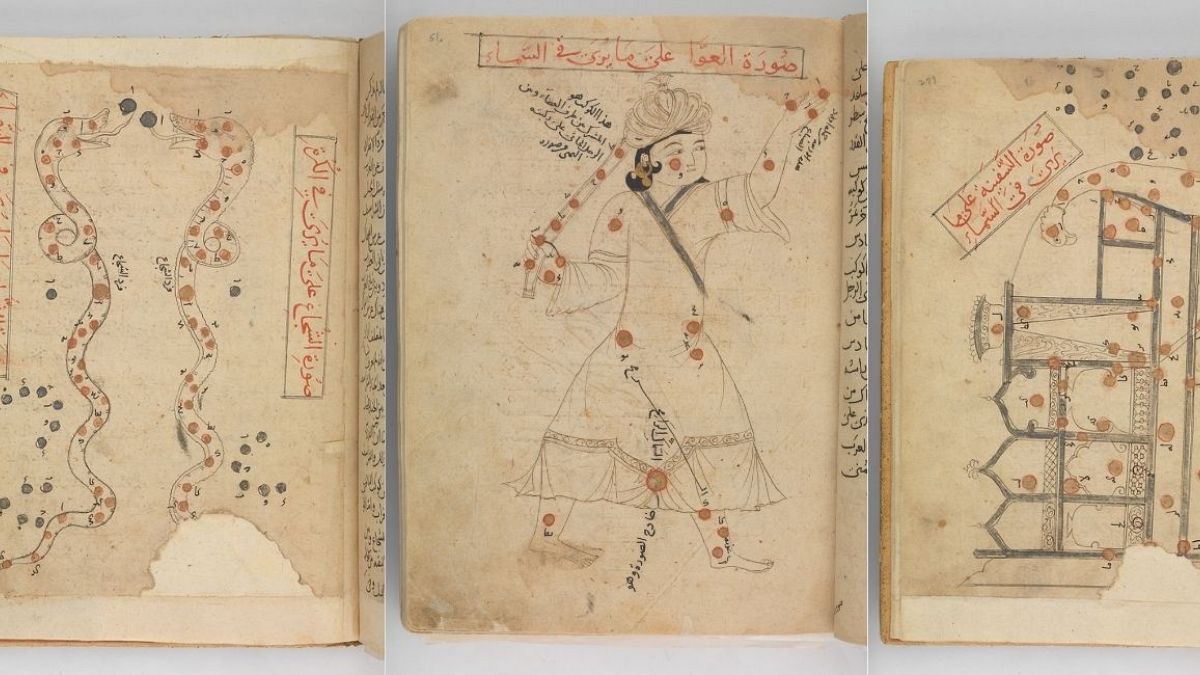The first true-to-the-original facsimile copy of the manuscript of Images of the Fixed Stars, an ancient astronomy manuscript by one of the most famous Muslim astronomers of all time has been resurrected by Uzbekistan's heritage initiative.
Uzbekistan has embarked on a journey to identify, catalogue and showcase all art objects reflecting the country's cultural heritage that are scattered around the world. Once at the centre of the Great Silk Road, Uzbekistan has an important cultural inheritance.
The most recent meeting from the initiative, named Cultural Legacy of Uzbekistan in the World Collections, brought together around 350 scientists from all over the world and was the key event of Uzbekistan’s Cultural Heritage Week.
The first true-to-the-original facsimile copy of the manuscript of Images of the Fixed Stars was also presented at the initiative. The book is the work of one of the most famous Muslim astronomers of all time, Abd al-Rahman al-Sufi, and it was commissioned by the special order of Mirzo Ulugbek, better known as Ulugh Beg, a Timurid dynasty (Sunni Muslim) sultan. Ulugh Beg was also a respected astronomer and mathematician.
The ancient manuscript, which has now been turned into a book, has historical significance because of several reasons: it is living proof of the centuries-old fascination of the firmament, the golden age of Islamic science, and the antiquity of the Arabic tradition in astronomy, to name a few.
Brilliant art and science come together
The book is hailed as a masterpiece of Central Asian art: it has 74 fascinating miniatures of constellations executed using the finest technique. It also marks the trend where illustrated manuscripts were increasingly produced and is one of the oldest surviving treatises of its kind. The manuscript contains miniature illustrations depicting the sultan in the form of the constellation Cepheus.
Beyond its artistic value, the book also holds enormous scientific importance. The work, containing 48 constellations known as the Fixed Stars, is based on knowledge of the stars transmitted by the Greeks but includes the principles of ancient Arab astronomy for the first time.
Before Abd al-Rahman al-Sufi, the first known attempts to describe the starry sky were done by the Greeks. By Ptolemy (100-160), to be precise, who was an ancient philosopher, mathematician and astronomer from Alexandria. His writings were regarded as the standard scientific work on celestial science up to the early modern age. His most important work was ‘Almagest’ a systematic guide to mathematical astronomy, which was the main reference for centuries until Abd al-Rahman al-Sufi came on the scene.
Abd al-Rahman al-Sufi’s contribution to astronomy
Al-Sufi’s work on the fixed stars was based on the Almagest by Ptolemy, but he corrects various statements and supplements them with his own empirical conclusions. He took all the star names mentioned in Ptolemy’s catalogue of stars and merged them with the ones mentioned in Arabic literature.
In his observations, Al-Sufi added the earliest known descriptions and illustrations of the Andromeda Galaxy and also the first recorded mention of the Large Magellanic Cloud - the first galaxies other than the Milky Way to be observed from planet Earth.
In the astronomer's book, all the mythological figures representing the constellations are depicted as seen in the sky but also as seen from space. And thanks to this, his work served for many centuries as the most important guide to the stars both in the Islamic and also Christian world.
Astronomy as part of Uzbekistan’s cultural Heritage
The original manuscript for the book of the Images of the Fixed Stars did not survive, however, thanks to the Islamic manuscript tradition, Al-Sufi’s work lived on in copies that were made after.
The contemporary facsimile version being presented at the Cultural Legacy of Uzbekistan in the World Collections is the result of Uzbekistan’s goal to use advanced scientific technologies in the preservation of historical exhibits and manuscripts.
Dozens of other books devoted to Uzbek works have already been published as part of the initiative. And there is also work in progress on the digitisation and publication of facsimile copies of outstanding works preserved in libraries around the world.
UNESCO representatives have praised Uzbekistan for its initiative to preserve the rich historical and cultural heritage of the country. Renato Ramírez, Deputy Director-General for Culture of UNESCO said Uzbekistan was, in this matter “an example for many countries. Research is a way of transferring not only academic knowledge but also knowledge for our children and new generations.”





